Coupling between voltage sensors and activation gate in voltage-gated K+ channels
- PMID: 12407078
- PMCID: PMC2229552
- DOI: 10.1085/jgp.20028696
Coupling between voltage sensors and activation gate in voltage-gated K+ channels
Abstract
Current through voltage-gated K+ channels underlies the action potential encoding the electrical signal in excitable cells. The four subunits of a voltage-gated K+ channel each have six transmembrane segments (S1-S6), whereas some other K+ channels, such as eukaryotic inward rectifier K+ channels and the prokaryotic KcsA channel, have only two transmembrane segments (M1 and M2). A voltage-gated K+ channel is formed by an ion-pore module (S5-S6, equivalent to M1-M2) and the surrounding voltage-sensing modules. The S4 segments are the primary voltage sensors while the intracellular activation gate is located near the COOH-terminal end of S6, although the coupling mechanism between them remains unknown. In the present study, we found that two short, complementary sequences in voltage-gated K+ channels are essential for coupling the voltage sensors to the intracellular activation gate. One sequence is the so called S4-S5 linker distal to the voltage-sensing S4, while the other is around the COOH-terminal end of S6, a region containing the actual gate-forming residues.
Figures

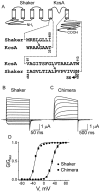

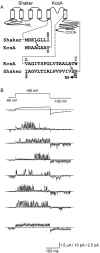
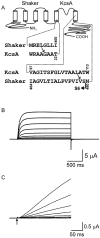


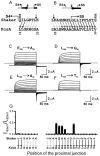
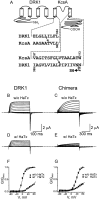
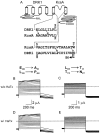



References
-
- Aggarwal, S.K. 1996. Analysis of the voltage-sensor in a voltage-activated potassium channel. Ph.D. thesis. Harvard University, Cambridge, MA.
-
- Aggarwal, S.K., and R. MacKinnon. 1996. Contribution of the S4 segment to gating charge in the Shaker K+ channel. Neuron. 16:1169–1177. - PubMed
-
- Caprini, M., S. Ferroni, R. Planells-Cases, J. Rueda, C. Rapisarda, A. Ferrer-Montiel, and M. Montal. 2001. Structural compatibility between the putative voltage sensor of voltage-gated K+ channels and the prokaryotic KcsA channel. J. Biol. Chem. 276:21070–21076. - PubMed

